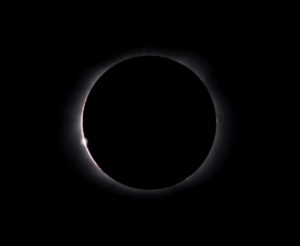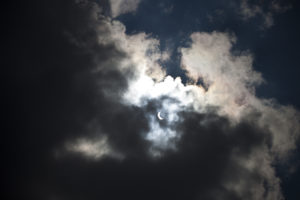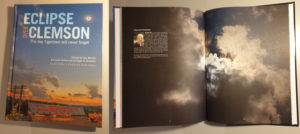Emotion is a highly sought-after word. It is not easy to excite someone and when someone succeeds with us, they leave us something special and unique. Getting excited by "something" rather than someone is even more difficult. We are bombarded with infinite inputs, from different media, real and virtual, and everything often seems obvious and predictable. Even Nature, with its most spectacular phenomena, at times leaves us indifferent and apathetic. How nice to be a child again and experience all the emotions they experience every day, every hour, every minute.
After all, it is not so difficult: try to join a small child for a few hours with eyes full of amazement, try to look with HIS/HER eyes, let yourself be carried away by HIS/HER emotions and HIS/HER screams of amazement at seeing a tree with colorful autumn leaves, discovering for the first time the bright disc of the Moon in the sky or smelling a flower with very bright colors. It is not difficult, we have all been children and we have all had these very deep sensations, almost of fear, when our brain has absorbed the wonders of nature like a small sponge.
Observing a total solar eclipse is one of those emotions that you never forget, that make you a child again, that make you understand that, inside of us, we are still little children.
But let's start from the beginning. It is not easy to chase solar eclipses. They are quite rare events, but not very rare (there are 2 to 5 of them every year), which however are visible only for a few minutes in a very limited area of the globe. So to see one you have to travel. The partial ones, when the solar disk is eaten only a little by our satellite, are much more frequent but definitely less spectacular. In fact, our sun is so bright that even if the Moon covers 90% of its disk, the perception of a change of light on the ground is very minimal.
Only with a TOTAL eclipse does the wonder explode.
My trip to the USA in 2017 was organized precisely for the "great American eclipse", as everyone called it. You know, like all celestial events, it's also a matter of luck. Already in 1999 I had tried to see the European eclipse: on 11 August I was in Munich, chasing a sun always surrounded by clouds. And in the end, in the fateful minutes of totality, I was wrapped in black clouds under a thin and annoying rain. Using the term "annoying" is an understatement...
The journey must be organized with care: instruments, cameras, weather app always in hand and a rental car to move quickly in case of local bad weather. Fortunately, i n 2017 I didn't need it.
n 2017 I didn't need it.
The trip to the USA was also accompanied by a magnificent visit to the Kennedy Space Center in Florida. It is a fundamental stop for lovers of space, astronomy and astronautics, a historical museum that embraces the entire history of space flights from the 1950s to the present day. Do not miss the majestic view of the Space Shuttle Atlantis, which is discovered almost by magic behind a cinema screen once the presentation video is finished. Emotion.
Chasing an eclipse can be tricky. Planning is essential and we will not have another chance as the event can only last from 2 to 7 minutes (very rare case). The choice of the location must be made well in advance. I was not sure whether to choose an isolated place, in the middle of the South Carolina countryside or look for a more urban spot: with the presence of other people, the word EMOTION we mentioned earlier is certainly more palpable.
The strip of totality, which ran throughout the United States, passed through a town named Clemson, South Carolina, also famous for its University of Physics and Astronomy. What better place to see perhaps the most important astronomical event of the year? My choice therefore fell on Clemson, and I must say that the place and the people were very welcoming and available.

 The campus was already well prepared the day before to accommodate a large audience and in fact, the thousands of people who crowded the next day put a strain on the whole organization, which still held up well.
The campus was already well prepared the day before to accommodate a large audience and in fact, the thousands of people who crowded the next day put a strain on the whole organization, which still held up well.
The totality arrives after about an hour and a half of partiality: at this link on the video page of this same website you will find the video of the whole event, from the first contact, to the totality, to the last contact. The emotions when the black sun takes the place of light are incredibly intense: we go from amazement to disbelief, from wonder to tears. Few events of nature know how to trigger so many emotions that are absolutely not describable here.

Shortly before totality, the sky from intense azure begins to turn blue. From a distance, if you are in a favorable position, you can see the shadow of the moon rapidly approaching towards you, bringing with it a cold and ghostly air. Everything changes in an instant: animals and birds in particular stop chirping, believing that the night has come.
And the night really comes. It is not a deep night, it is a deep dark blue that covers the whole sky. The stars appear and it is possible to see Venus and Mercury, the two inner planets closest to the Sun. In the very early stages of totality we can see the so-called Baily grains, optical-luminous effects that occur naturally during a total solar eclipse, observable only for a few moments, in the second contact (or first internal contact) and in the third contact (or second internal contact) in the solar corona near the lunar edge. They are due to the irregular topography of the lunar surface, therefore of the edge of the lunar disk observed from the Earth, which generates luminous grains or pearls due to the passage of sunlight, which shines through some places of the Moon (mainly depressions such as valleys, seas and craters) and not through others (for example mountain ranges).
Being surrounded by a large audience increases the emotion even more because the "oooohs", the cries of amazement and joy of the people are added exponentially to one another.
Two and a half minutes, for a journey of 7000 km, seems very few, but I assure you that it is worth it.
As the beauty of the Black Sun has arrived, so it goes, silently and suddenly, because as soon as the Sun peeps out from behind our Moon again, the day takes over and the magic disappears. But not the emotion. I still have that inside, even after days, even after months. You return to normal with a little effort, as if something wonderful had been ripped from your heart, leaving a small hole, as large as that Moon which, by a strange cosmic coincidence, is exactly the same apparent size as our Sun and therefore it covers it perfectly creating this fantastic natural phenomenon.

Since, as already said, to see an eclipse you must also have a little luck, there was a moment in which, during the partiality phase, I thought that the latter had abandoned me. Black clouds had partially covered the sky in the south, leaving a glimpse of a slice of the sun only partially. Fortunately, they lasted only as long as a few photographs. By another coincidence and (also in this case) a bit of luck, I was then contacted by the director of scientific communications of the Clemson Department of Physics and Astronomy, who suggested me to publish this photograph in the book of the event, which they would publish shortly after.
The culmination of a lot of work and a lot of passion.

